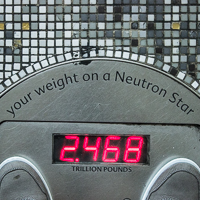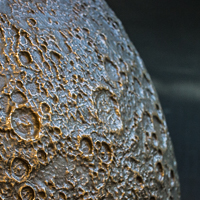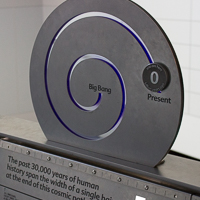
About the Collection
The theme uniting the three dozen different halls of the museum is: *origins and connections*. Where did life come from and how is it connected? Beginning with fossils, the museum lays out how plant and animal life evolved on this planet, how it is related and resulted in cultures unique to their environments. The preface to this story is found in the Earth and Space Halls. Why is there a host for the abundance of life? What else is out there? How did the Universe begin? These questions are asked and answered in the halls devoted to Earth and Space.

What You Will See
Beginning at the spacious Hall of the Universe, the collections devoted to space and Earth's unqiue place in it are the most modern and educational in the museum. Get a sense of the massive (and tiny) scale of the universe, as well as its unfathomable age along the cosmic pathway. See a movie about black holes, touch a meteorite (or two), see a piece of the moon, learn why we experience volcanos and earthquakes. These halls rely more on text, models and graphics. Artifacts from space are difficult to acquire--though the museum has some of the world's best including the largest meteorite to strike North America (and it's not even the largest meteorite in the museum).

Why You Should Go
The Earth and Space center is almost a separate museum. You could spend the entire day in these halls--and if you have time for two separate visits, that's the best way to split them. That does not mean they cannot be meaningfully combined in a single visit. If you plan to see as much as the museum as possible, this is where you start: at creation. Where did the universe come from? Where did the earth come from within that? What is the earth made of and why does it behave the way it does? And, ultimately, why is it habitable? Then head upstairs to start a tour of fossil life, keeping in mind the meteorites you saw and their likely role in major environmental changes. Or, just come here and be awed by space and time.




